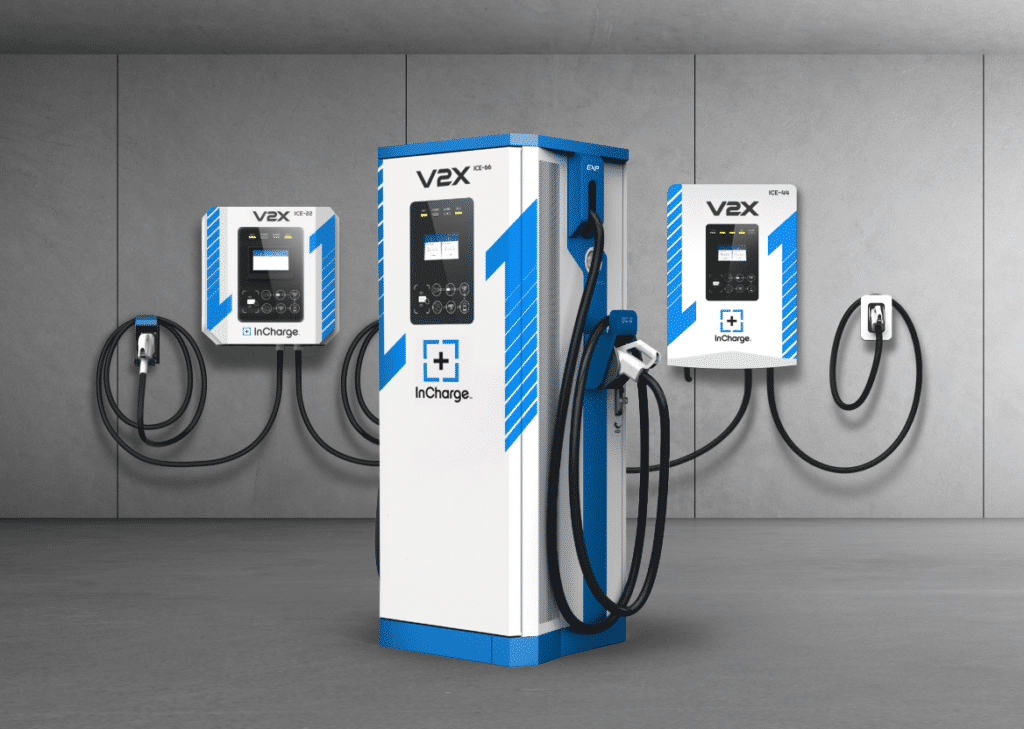How Bidirectional Charging and DERs Will Save Grids From the Massive Influx of EV Charging
The global electric vehicle (EV) revolution is now in full swing. Worldwide sales of EVs have experienced incredible growth, rising from about 4% in 2020 to 14% in 2022. According to the International Energy Agency (IEA), “Demand for electric cars is booming, with sales expected to leap 35% this year after a record-breaking 2022.” The 2023 version of IEA’s annual Global Electric Vehicle Outlook states that over 10 million electric vehicles were sold around the globe in 2022. IEA predicts that these sales will increase by 35% in 2023, passing 14 million. The latest IEA projections state that this percentage will grow to 18% in 2023.
“Electric vehicles are one of the driving forces in the new global energy economy that is rapidly emerging – and they are bringing about a historic transformation of the car manufacturing industry worldwide,” said IEA Executive Director Fatih Birol.

In the United States, electric car sales increased by 65% in 2022
According to CleanTechnica, “approximately 5.7% of US car sales were fully electric cars in 2022. That’s up from 3.2% in 2021, 1.7% in 2020, and 1.4% in 2019. In 2022, our analysis shows that battery electric vehicle (BEV) sales increased 65% compared to 2021.”

Where will all of the additional power come from to charge all of these new EVs?
Experts around the globe are concerned about how the electric grids will handle all of the additional electricity needed to power all of these new EVs. I believe two important solutions are distributed energy resources (DERs) and bidirectional charging, which both add capacity when and where it’s needed, taking pressure off the grid.
The rise of renewables is encouraging
Historically, increased electrical demand has been correlated with increased carbon emissions due to the heavy reliance on fossil fuels. Fortunately, renewable energy, especially wind power and solar power, are on a simultaneous meteoric rise. These sources will provide the clean power needed to charge a portion of the growing number of EVs.
As an environmentalist and former NABCEP-certified solar marketer, I support these clean energy sources, and I find it very encouraging that these clean energy sources are on the rise. However, in my opinion, these sources cannot grow fast enough to accommodate the additional EV charging demand needed in the years to come, as the power density of the resources pales in comparison to the EV demand.

Distributed energy resources provide relief to the grid for EV charging and other energy needs
Distributed energy resources, producing power at the point of consumption, can be a very valuable resource. The publication “Using Distributed Energy Resources: A How-To Guide for Federal Facility Managers“, was produced for the U.S. Department of Energy (DOE) by the National Renewable Energy Laboratory (NREL). According to this guide, “DER systems can be used in several ways. They can help you manage energy bills and ensure reliable power by augmenting your current energy services. DER systems also enable a facility to operate independently of the electric power grid, whether by choice or out of necessity.”

DER systems can be utilized by business owners, government agencies, utilities, and more
NREL’s guide also states: “Utilities can use DER technologies to delay, reduce, or even eliminate the need to obtain additional power generation, transmission, and distribution equipment and infrastructure. At the same time, DER systems can provide voltage support and enhance local reliability.”
DERs, which can take the form of renewables, or draw power from a variety of other power sources, are one solution to the growing demand for EV charging.
Xendee is the leading software solution offering microgrid and DER design and operation in one platform
Xendee, recognizing this paradigm, has developed the most advanced software for the design and operation of EV fast charging infrastructure, DER, and microgrids. The company is based in San Diego, California, and is an authority on the subjects of matching EV charging infrastructure and DERs.
Zachary K. Pecenak, Ph.D., Senior Director of Product at Xendee, said: “Xendee was designed for exactly this. We recognized the impact that large-scale adoption of electric vehicles would have on all aspects of the electric grid from generation through distribution. We also recognize the value of DERs and microgrids to defer these issues by meeting demand locally, in a clean and cost-efficient manner. This is reflected in our tool suite, where designing a traditionally complex solution is made as easy as possible.”

What is bidirectional EV charging, and why is it important to the mass adoption of electric vehicles?
Traditional, first-generation EV charging equipment sends energy only one way, from the energy source to the vehicle. In these systems, alternating current (AC) electricity is converted to direct current (DC) energy. This energy is then transferred to the EV’s battery, and stored to power the vehicle.
Bidirectional EV charging takes the DC energy stored in the EV’s battery, converts it back to AC energy, and transfers it to a variety of other recipients. These recipients can include a business, a government building, a home, an appliance, or another vehicle. Smart charging technology manages the flow of this electricity.
Types of bidirectional EV charging
Vehicle-to-grid (V2G) is currently the most common type of bidirectional charging. Using a converter most commonly present in the charger, V2G allows vehicles to send power back into the grid when needed. Smart charging programs offer incentives to EV drivers that allow management of the times and rates of charging of their vehicles. Energy can be harnessed from a large number of vehicles, during periods of peak demand.
Vehicle-to-home (V2H), or Vehicle-to-building (V2B) bidirectional EV charging is currently less common, but it has great growth potential. Benefits include the ability for homeowners or business owners to save money by drawing power from the EV during times of higher energy cost due to time-of-use (TOU) rates. The EV batteries could then be recharged overnight, during off-peak times when energy prices are lower.
Other benefits of V2H or V2B include the ability to power a house or building during a blackout, allowing the homeowner or business owner to keep the home or business powered without the need for a generator or a storage battery. An example is the all-electric Ford Lightning pickup. In the video below, Ford states that the truck’s battery with the extended option, could fully power a house for 3 days, or 10 days if the power is rationed to essential needs.
Vehicle-to-load (V2L) is the most common of all bidirectional EV charging types. With V2L, the car’s battery can be used to power appliances such as music players, coffee machines, microwaves, and more. On camping trips, V2L is valuable to do things such as inflating an air mattress. V2L is also beneficial in more serious situations. These may include rescue and relief during natural disasters or other emergencies.
In the Hyundai IONIQ video below, the IONIQ’s stored electricity in the EV battery is used to power electronics. Charging a stranded, battery-depleted EV is another option with vehicle-to-vehicle (V2V) charging. This video demonstrates the two available sources for V2L power on the Hyundai IONIQ. The settings and indicators are also explained in detail.
V2X means vehicle-to-everything. When referring to bidirectional EV charging, it’s an umbrella term encompassing all bidirectional charging, including V2G, V2L, and V2V.
V2X technologies, and which vehicles offer them
Currently, the EVs that offer V2X capability are limited. Some of the vehicles that offer V2X include the Nissan Leaf, Ford F-150 Lightning, Hyundai IONIQ, Kia EV6 and the Mitsubishi Outlander PHEV.
SDGE partners with The Cajon Valley Union School District and Nuvve to deploy V2G using eight electric school buses
In July 2022, San Diego Gas & Electric announced the deployment of eight electric school buses using V2G to transfer power from EV batteries back to the grid when needed, such as during a heat wave. The Cajon Valley Union School District partnered with SDG&E and Nuvve to create the pilot program. The Cajon Valley Union School District serves El Cajon and Rancho San Diego in San Diego County, California. Nuvve is the global leader in vehicle-to-grid (V2G) technology offering high-powered charging and grid services that optimize unused and renewable energy, and is based in San Diego, CA.
“School buses are an excellent use case for V2G,” said Nuvve Co-Founder, Chair and CEO Gregory Poilasne. “They hold larger batteries than standard vehicles and can spend peak solar hours parked and plugged into bi-directional chargers. Nuvve’s technology enables the grid to draw energy from a bus when it is needed most, yet still ensuring the bus has enough stored power to operate when needed.”

EVs have a unique potential to support the grid
EVinfo.net consulted with V2X expert Russell Vare for his opinion. Vare said: “EVs have a unique potential to support the grid because they are a flexible load with large batteries. If we can smart charge vehicles to match renewable energy production, we can use EVs to add more renewables to the grid. And if we can discharge just a small portion of those EVs during peak hours on the grid, we can avoid huge capital expenses such as new gas peaker plants. If just 10% of EVs on the road in California today were V2G connected, it would equal all existing stationary storage capacity in the state.”

Electric vehicles can be deployed to sites where emergency energy is needed
According to the US Department of Energy, “Bidirectional vehicles can provide backup power to buildings or specific loads, sometimes as part of a microgrid, through vehicle-to-building (V2B) charging or provide power to the grid through vehicle-to-grid (V2G) charging. V2B and V2G power solutions can complement solar photovoltaic (PV) arrays and other distributed energy resources (DERs), or supplement diesel generators as backup power. In contrast to stationary storage and generation which must stay at a selected site, bidirectional EVs employed as mobile storage can be mobilized to a site prior to planned outages or arrive shortly after an unexpected power outage to supplement local generation or serve as an emergency reserve.”
Proposed California legislation would require new EVs sold in California as of 2027 to have bidirectional charging capability
Bidirectional charging is growing fast in the EV charging space. One of the companies that has already implemented it is InCharge Energy, located in Santa Monica, California. In April 2023, EVinfo.net reported that InCharge Energy announced the launch of its vehicle-to-everything (V2X) DC fast charger portfolio.

Cliff Fietzek, CTO of InCharge Energy, said: “Our turnkey bidirectional solution not only helps our fleet customers reach their emissions reduction goals, it also provides greater sustainability for local communities. Importantly, the V2X portfolio supports proposed California legislation which looks to establish goals for bidirectional charging in the state and would require new EVs sold in California as of 2027 to have bidirectional charging capability.”
Important V2G developments in the news
In October 2022, EVinfo.net reported on an important development, the USA’s first vehicle-to-grid export rate for commercial electric vehicles, offered by the California Bay Area’s power utility Pacific Gas & Electric, (PG&E). This V2G export rate provides incentives to help commercial customers offset fleet costs. It provides an innovative solution for these vehicles to export power back to support the grid during periods of peak energy demand. The groundbreaking settlement was an agreement made with the Vehicle-Grid Integration Council (VGIC), and Electrify America.
Another important development was Fermata Energy’s bidirectional EV charging system, the first in the world to receive UL certification for a V2G electric vehicle charging system. The new North American safety standard, UL 9741, is the standard for bidirectional electric vehicle (EV) charging system equipment.
Bidirectional EV charging and DERs are both important to handle the massive influx of EV charging that is coming soon
Bidirectional EV charging and DERs are both important to protect the grid from outages and other problems from too many EVs being charged at once, exceeding the current capacity. In the United States, efforts are under way to increase electrical grid capacity in anticipation of all of the new EVs hitting the market, but that may not be enough. By leveraging the power of DERs and bidirectional charging, I believe these two solutions will fill the gap needed for grid reliability and stability during periods of peak usage, such as a heat wave.

Electric Vehicle Marketing Consultant, Writer and Editor. Publisher EVinfo.net.
Portfolio: BillPierce.net
